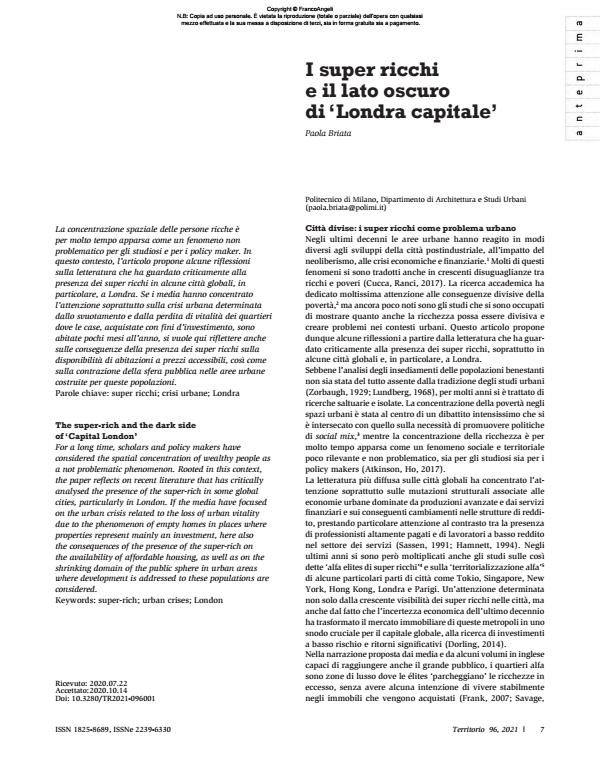I super ricchi e il lato oscuro di "Londra capitale"
Titolo Rivista TERRITORIO
Autori/Curatori Paola Briata
Anno di pubblicazione 2021 Fascicolo 2021/96
Lingua Italiano Numero pagine 11 P. 7-17 Dimensione file 1226 KB
DOI 10.3280/TR2021-096001
Il DOI è il codice a barre della proprietà intellettuale: per saperne di più
clicca qui
Qui sotto puoi vedere in anteprima la prima pagina di questo articolo.
Se questo articolo ti interessa, lo puoi acquistare (e scaricare in formato pdf) seguendo le facili indicazioni per acquistare il download credit. Acquista Download Credits per scaricare questo Articolo in formato PDF

FrancoAngeli è membro della Publishers International Linking Association, Inc (PILA)associazione indipendente e non profit per facilitare (attraverso i servizi tecnologici implementati da CrossRef.org) l’accesso degli studiosi ai contenuti digitali nelle pubblicazioni professionali e scientifiche
La concentrazione spaziale delle persone ricche è per molto tempo apparsa come un fenomeno non problematico per gli studiosi e per i policy maker. In questo contesto, l’articolo propone alcune riflessioni sulla letteratura che ha guardato criticamente alla presenza dei super ricchi in alcune città globali, in particolare, a Londra. Se i media hanno concentrato l’attenzione soprattutto sulla crisi urbana determinata dallo svuotamento e dalla perdita di vitalità dei quartieri dove le case, acquistate con fini d’investimento, sono abitate pochi mesi all’anno, si vuole qui riflettere anche sulle conseguenze della presenza dei super ricchi sulla disponibilità di abitazioni a prezzi accessibili, così come sulla contrazione della sfera pubblica nelle aree urbane costruite per queste popolazioni.
Parole chiave:super ricchi; crisi urbane; Londra
Paola Briata, I super ricchi e il lato oscuro di "Londra capitale" in "TERRITORIO" 96/2021, pp 7-17, DOI: 10.3280/TR2021-096001